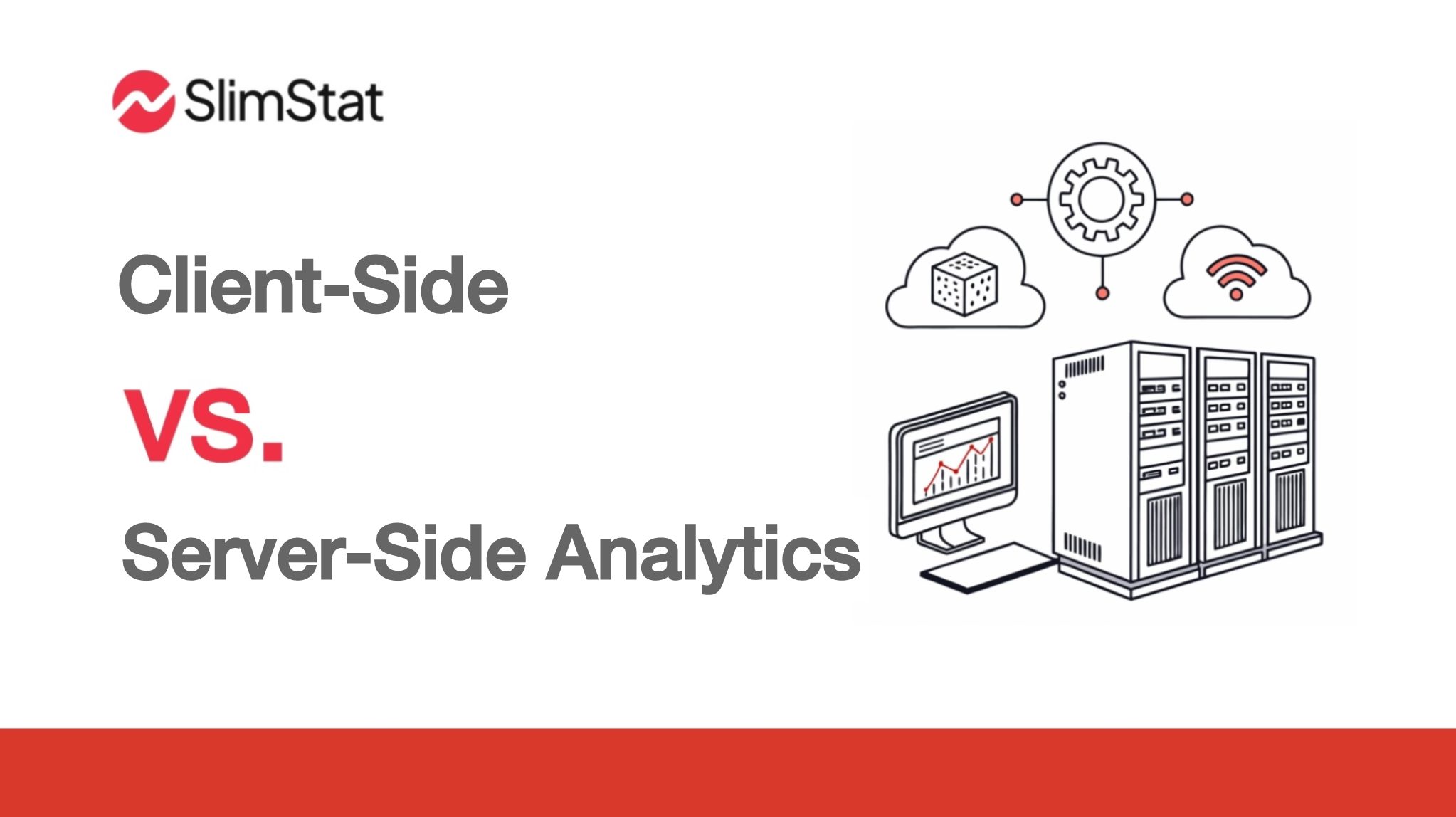Compare client side vs server side analytics for WordPress—see the pros and cons of browser scripts, server logs, or a hybrid approach that balances accuracy, speed, and privacy.
Ever feel like your analytics are playing hide-and-seek? Imagine this: you just added a flashy new promo banner or launched a summer sale, and your gut tells you it’s a hit. You check your dashboard and… crickets. Or worse, it shows odd spikes that don’t line up with what you know happened. Confusing, right? Most of the time, the mismatch comes down to where data gets collected—in the user’s browser (client-side) or on your own server (server-side). The choice affects accuracy, speed, and privacy. Let’s explore the ten questions you need to answer before picking a side.
What is the real difference between client-side and server-side analytics?
Client-side analytics runs in the visitor’s browser. A snippet of JavaScript or a tiny pixel fires off data—pageviews, clicks, scrolls—to a third-party service. It’s like asking guests to fill out a survey the moment they walk in.
Server-side analytics logs each request directly on your server. Every time someone loads a page or resource, your site writes the event into its own database before serving the content—like a bouncer noting every guest who enters.
Why do many websites start with client-side tracking?
Rich event insights: Track scroll depth, video plays, form submissions, and custom events without extra coding.
- Instant dashboards: Visual reports, funnels, and automated emails out of the box.
- Zero server load: All data processing happens offsite.
- Quick setup: Add a script tag and you’re live in minutes.
Reality check: If a visitor blocks that script, their activity vanishes from your reports.
Where can client side analytics let you down?
- Blocked by privacy tools: Up to 30 % of users run ad blockers.
- Performance hit: Extra JavaScript can slow page loads.
- Data custody: User behavior lives on external servers—GDPR/CCPA compliance can get tricky.
Why should you consider server side analytics?
Complete accuracy: No ad-blocker can stop your server from recording a page request.
- Privacy-first: All visitor data stays on your infrastructure.
- Lightweight client code: Visitors download only your site’s core scripts.
- Quick tip: Use hashed IPs and user-agent parsing for better anonymization.
What might you miss if you use only server side analytics?
- Front-end interactions: Clicks, form fills, scroll depth need extra endpoints.
- Setup complexity: You manage storage, parsing, reporting dashboards.
- Database growth: Plan retention and archiving to avoid bloat.
Can you combine client side and server side analytics for the best of both worlds?
Absolutely. A hybrid approach lets you:
- Log every pageview on the server for rock-solid coverage.
- Capture advanced events in the browser for granular detail.
- Merge streams in one dashboard or BI tool for a 360° view.
How do you choose the right analytics approach for your WordPress site?
- List your priorities: Accuracy vs. compliance = lean server-side.
- Identify must-have events: Only add client-side scripts for those.
- Test performance: Measure load times before/after scripts.
- Check privacy policies: Keep visitors informed and compliant.
How does WP SlimStat power server side analytics in WordPress?
- Own your data: Every hit logs in your database—no third-party sharing.
- Real-time reporting: Live activity, bot filters, geolocation insights.
- Scheduled exports: CSV reports and email digests.
- Scalable: Add client-side scripts only when needed.
How do you put client-side and server side analytics into practice?
- Install WP SlimStat and verify pageview logs.
- Map critical events: decide which need client scripts.
- Implement wisely: add scripts only for those events.
- Review regularly: compare server data to your dashboard.
Quick FAQs
What is the difference between client side and server side analytics?
Client side analytics runs in the visitor’s browser; server side logs data on your own server. The first is great for tracking events, the second for reliable and private data collection.
Which is more accurate client side or server side tracking?
Server side tracking is usually more accurate because it can’t be blocked by ad blockers or browser settings.
Can I use both client side and server side analytics together?
Yes. A hybrid setup gives you reliable pageview logging and detailed event tracking best of both worlds.
Is server side analytics better for privacy?
Yes. Since all data stays on your server, it’s easier to comply with privacy laws like GDPR or CCPA.
What’s a good WordPress plugin for server side analytics?
WP SlimStat offers real-time, privacy-focused tracking entirely within your WordPress site—no third-party sharing.
Final Thought
Choosing between client side and server side analytics isn’t about picking a winner—it’s about finding the right balance for your website’s unique needs. While client side tracking offers rich, detailed user interactions, server side analytics provides unmatched accuracy, privacy, and control. By leveraging a hybrid approach powered by tools like WP SlimStat, you can enjoy the best of both worlds: comprehensive insights without sacrificing user privacy or data reliability. Embrace privacy-first analytics today and make smarter, faster decisions with confidence.
Ready for accurate, privacy-first analytics on WordPress?
Install WP SlimStat today and master both client-side and server-side tracking for complete peace of mind.

